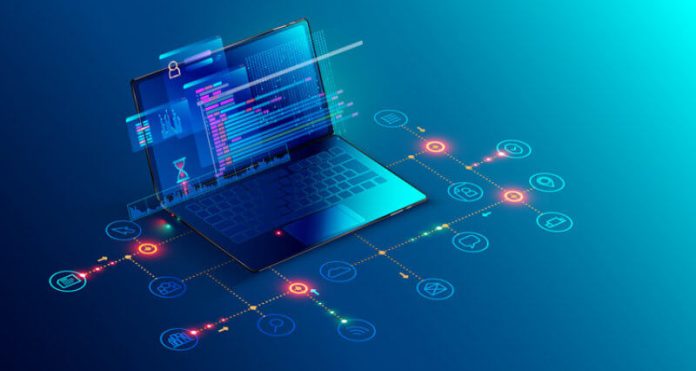This article is written by Preeti Pallavi Jena, from the School of Law, KIIT University, Odisha. This article talks about the IPR, its role, and the development in software industries.
Table of Contents
Introduction
The foundation of the software industry is associated with intellectual property rights throwing light on copyrights, patents, trademarks and trade secrets. Each of them provides legal protection but in different ways. Trademarks protect the symbols, and names which are used to know and identify different products in the market. Copyright, patent, and trade secrets have a major role in protecting technology. With the developing country, the Indian software companies will become more complex, and hence, advanced technology, more labor, and marketing skills will be required. For following the current trend and achieving success in that part, companies must create new intellectual property because what we have is more usable and also it will be more creative and innovative, attractive in nature.
Copyright tries to protect the specific works, creativity, and the expression of an idea. The protection of software by copyright was established by the World Trade Organization (WTO) Agreement internationally on TRIPS (Trade Related Aspects on Intellectual Property Rights). The computer programs are treated through WTO members as per Article 10 of the TRIPS agreement. Copyright also protects the software code but the code should be in written format and should be recorded. These holders of copyright can restrict others from using and selling unauthorized copies of the work.
Intellectual Property Rights
Intellectual property includes creativity, uniqueness, inventions, symbols etc. IPR is also like other rights of property. They restrict others from using, selling such products without their permission. They can also sue such people who infringe or try to use or sell their product without their knowledge. They can also be made liable to pay the amount of compensation in charge for the damages caused to any such person. IPR is an old concept, but came to use and developed only recently. It started in Italy. The necessity of the IPR came in the 19th century. There are 2 conventions for IPR systems all over the world.
- Paris Convention (Protection of industrial property), 1883
- Berne Convention (Protection of literary & artistic works), 1886
To know more about IPR please visit
Indian software industry
The software includes telecommunications equipment, computer hardware, electronic components, etc. Software is one of the major features related to communication. The average growth rate of Indian software increased to 48% from 1994-95 to 2001-02. It increased from 35% to this in a 5 years gap. But in the year 2002, the software export growth decreased drastically to 24%.
Intellectual property protection in the past
India was having a very bad reputation regarding the protection of intellectual property. This was because of them being unrelated to the software. This was because of a slow judiciary system and lack of products in the pharmaceutical sector and high piracy rates.
But these troubles did not discourage India from protecting IP software, rather it made more development in the Indian software industry. There was a huge growth in this sector and there will be more growth in the future. Though now there are very few intellectual property software that needs to be protected in India.
Patent protection
In the time period of 1996 to 2003, about one-third of the foreign software firms had US patents but it was seen that only 3% of Indian firms were awarded patents. In our Indian law, software falls into the established unpatentable subject matter like algorithms, business methods. Hence, India is not awarding patents for software. But if there is software that has a technical effect on it and it is a part of the physical system then it can be patented. At the higher business levels, there is a discussion regarding the pure software patenting which will be taking place in India.
The concerns include the extent up to which the social well-being would be hindered by the software patents, the practicality of these twenty-year patents with the high rates of the infamous technological discontinuance, and the expanse up to which the software patent applications can fulfill the imperceptible criterion. As of today, an expeditious change in the patent approval policy may not be expected but a small change towards a better patent approval policy in India could make a huge difference for the innovators.
Article 27 of TRIPS protects patents for any inventions but they must fulfill the general requirement which is novelty, utility, and non-obviousness.
To know more about Patents please visit
Copyright protection
This method has been used more frequently than that of patents for protecting Intellectual Property in software. Around 18% of big Indian brands have registered for software copyrights in the United States.
Protection of software copyrights in India can be in international standards but not in every respect. This is no prevention for copying the registered software package for the use of it in various computers and it also allows several copies of the software for non-commercial uses. There is a weakness of the software copyright protection which is enforcement. The copyright infringement which occurred is very weak in nature. This is because collecting proofs with much hard work, the penalties that are given are very small and not worth it. In the case of infringement, the time period from the appeal to the judgment is generally long because the collection of proof for making a case is a hectic process and the involvement of frequent delays makes the process even slower. Due to this, very few cases involving infringement allegations make it to the judgemental phase. Copyright extends to protect the particular work but it cannot protect the ideas under such work.
Indian software and IP in the future
The business process for Indian software will keep on challenging with the passage of time. The Indian benefit of labor is low-cost, education, more people speaking in English, low wages, etc. These wages are rising day by day and more in countries like Europe, China, Ireland, etc. They are trying to develop their labor departments.
Shifts in company strategies
The Indian software industry needs more development in terms of creativity, more domain knowledge, management techniques, more customer contact, or else it will decrease the growth rate among the rest. In some companies, they try to develop the mass market packaged software products. They need to have a competing spirit in the skilled labor, marketing sectors, advanced technologies, etc. These competing requirements will make a better and new developed IP in the future. This will be an advanced model IP structure that will have innovations, cost-effective, and can be used in various ways.
New software strategies create companies that will have more IP of greater value than that of the previously existing products or services of software. They can reuse it for the customers. When there is more creativity, there will be more customers because it will attract them. People can get attracted if the price has been reduced of the existing ones or if new activities are created, then people by seeing the features can get attracted and will be ready for giving more money.
Ownership and value of IP to Indian software
In the past, the various organizations of India created intellectual property as a systematic software development contract. It is a contract where the need of one is to match and figure out the need of the client. The supply has been made in India and so it had two features. The first feature says that the company is created for the possession of the client. Secondly, the software which is systematically created was unique for the business purpose. Hence, it only has value for one client at a time.
Factors for development of Indian software
-
Skilled labor
Our country is more dependent on the youth, who have better knowledge about the industry. This industry depends more on skilled labor as compared to any physical or financial activities. The cost of giving software services is accounted for by labor which is around 70 to 80%. These engineers of software produce greater value. This is why now, the demand for software engineers in India is increasing hugely.
In the growth of highly rising software technologies, engineers are working harder for the development of various means like wireless broadband technology, software for the new telephones, designing microprocessors for the next generations. These creativeness, innovations that are made can be protected through copyright and patent. These both protect the creativeness of individuals and also firms so that no other person can misuse it.
-
Clustering
The industry of Indian software started from the place of Bangalore. Here, many cluster firms developed. After this, many more developed in other countries like Mumbai, Chennai, Hyderabad, etc. This software industry tried to follow the pattern of the American model. Clusters encourage the sharing of knowledge peacefully. This cannot be easily codified or put in the paper. It can only be learned through real communications like face to face interaction and also through visual notice. Our software managers try to recognize the limitations to the transfer of tacit in a cluster.
This tacit knowledge spread out across firms in geographic clusters. The first one is the source of labor and the second one is the source of credibility. When a cluster gets well settled and acquires a reputation and people start recognizing it as a geographic brand, then new firms try to measure the credibility at their location. When many software firms settle themselves in the same cluster, they become a source of employment for others.
-
Government policies
The government helped a lot in the increased growth and development of the software industry of India. But the contribution was not a direct one. Government policies created more educational places and research places and this was important skilled labor.
Most of the countries in India are dominated by the English language. All those who are educated and have more knowledge are mostly English speakers. The export customers in Northern America are also English speakers. Competitor countries for the software industry like Israel, Ireland are all covered with educated people who speak English.
-
Indian national culture
This culture supports the free exchange of ideas. But it is not absolute in nature. China has always been the main competitor. There is a good relationship between the software industry development and the national culture of India.
-
Non-Resident Indians (NRIs)
An NRI is a citizen of India who has been living outside India for a total of 183 days in the current financial year. These people act as a bridge between the software companies in the US and the suppliers in India.
The NRI provides:
- Knowledge (which Indian companies have less as compared to the US);
- Helped to overcome the adverse country;
- Make investments regarding financial matters to start new companies in India; and
- Source of information regarding western managerial practices, if they return to India.
Conclusion
Intellectual Property Rights (IPR) provides hugely for the underpinning of the software technologies and related industries. The law presents various ways for the protection of the rights of ownership of the companies. The stronger the protection of IPR is in a country, the better encouragement the innovation and technology sector gets leading to better economic growth. However, it is also believed that protection of IPR may lead to the dominance of patent holders and scope for innovation is diminished.
India is a developing country and the impact of IPR protection on the growth and innovation in industries here will depend upon a great number of factors. The profit-making model used by companies in the past will have to change for a better future. Earlier, the companies would compete to be the service provider with the lowest cost but this will not be a basis for competition anymore. These new competitive requirements indicate that the Indian companies need to respond swiftly to the changing market and strategize to formulate a new and more valuable intellectual property. The foundation for an increase in value for an IP is the innovation and how it solves the requirements of the consumers. This yields bigger margins and if it is reusable, it further increases its generated revenue without affecting the production cost significantly. These implications clearly suggest that the Indian software industries and other related industries must formulate new, innovative, and advanced intellectual properties and must shield it all time.
References
- https://www.businessinsider.in/software-industry-and-itsintellectual-property-/articlesh ow/52572899.cms
- https://www.nap.edu/read/2054/chapter/3#5
- https://www.iipta.com/intellectual-property-indian-software-industry/
- https://www.mondaq.com/india/patent/940286/ipr-in-development-of-software-technology-and-industry
LawSikho has created a telegram group for exchanging legal knowledge, referrals and various opportunities. You can click on this link and join:
 Serato DJ Crack 2025Serato DJ PRO Crack
Serato DJ Crack 2025Serato DJ PRO Crack










 Allow notifications
Allow notifications



